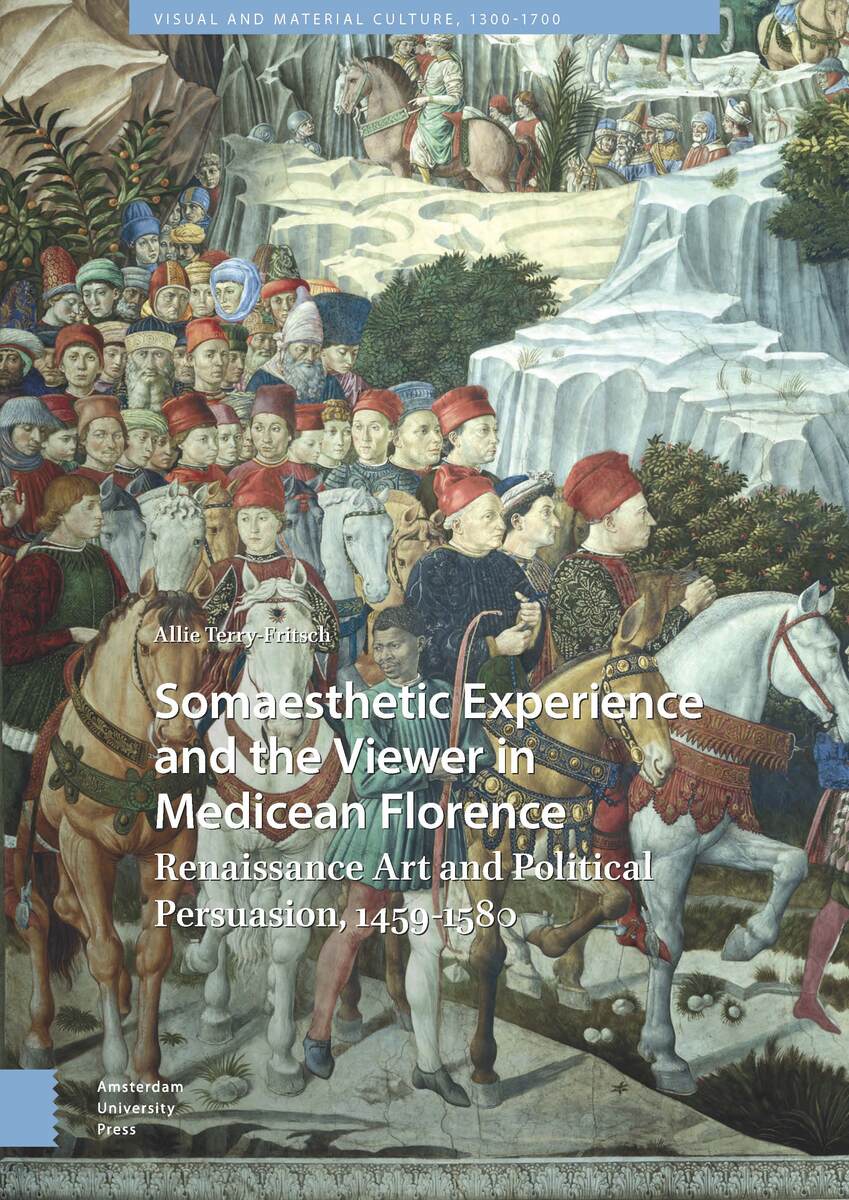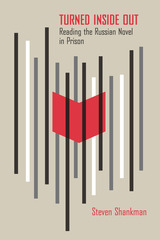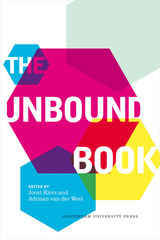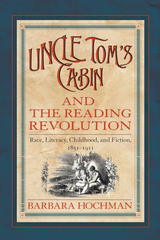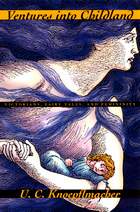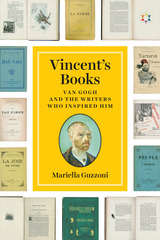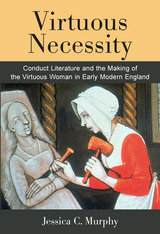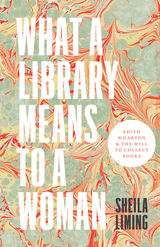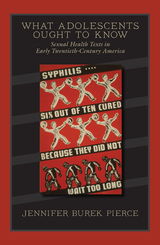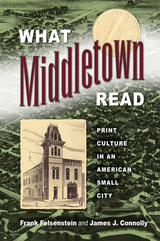Somaesthetic Experience and the Viewer in Medicean Florence: Renaissance Art and Political Persuasion, 1459-1580
Somaesthetic Experience and the Viewer in Medicean Florence: Renaissance Art and Political Persuasion, 1459-1580
by Allie Terry-Fritsch
Amsterdam University Press, 2020
eISBN: 978-90-485-4424-0
See other books on: Aesthetics | Renaissance | Social History | Social Psychology | Viewer
See other titles from Amsterdam University Press
eISBN: 978-90-485-4424-0
ABOUT THIS BOOK | TOC
ABOUT THIS BOOK
Viewers in the Middle Ages and Renaissance were encouraged to forge connections between their physical and affective states when they experienced works of art. They believed that their bodies served a critical function in coming to know and make sense of the world around them, and intimately engaged themselves with works of art and architecture on a daily basis. This book examines how viewers in Medicean Florence were self-consciously cultivated to enhance their sensory appreciation of works of art and creatively self-fashion through somaesthetics. Mobilized as a technology for the production of knowledge with and through their bodies, viewers contributed to the essential meaning of Renaissance art and, in the process, bound themselves to others. By investigating the framework and practice of somaesthetic experience of works by Benozzo Gozzoli, Donatello, Benedetto Buglioni, Giorgio Vasari, and others in fifteenth- and sixteenthcentury Florence, the book approaches the viewer as a powerful tool that was used by patrons to shape identity and power in the Renaissance.
TABLE OF CONTENTS
Cover
Plate 22. View of Giovanni de’Bardi’s treatise, Discorso sopra il giuoco del calcio fiorentino, in the hands of a reader (Photo: Author)
Table of Contents
Plates
Figures
Acknowledgements
1. Activating the Renaissance Viewer: Art and Somaesthetic Experience
Figure 1. Tourists in the Trecento room of the Galleria degli Uffizi, Florence (Photo: Author)
Somaesthetics and Political Persuasion
Figure 3. Fra Angelico, Entombment of Christ, 1438-1442, originally the central predella panel of the San Marco altarpiece, today in the Staatliche Museen, Berlin (Source: Alamy)
Figure 4. Fra Angelico, Mocking of Christ, c. 1440, Cell 7, Convent of San Marco, Florence (Photo: Art Resource)
Patronage and the Construction of the Viewer in Medicean Florence
2. Mobilizing Visitors: Political Persuasion and the Somaesthetics of Belonging in the Chapel of the Magi
Figure 5. View inside Cosimo de’Medici’s double cell at San Marco, featuring Benozzo Gozzoli’s Crucifixion with Medici Saints in Cell 38 and Adoration of the Magi in Cell 39, c.1443-1444, fresco, north corridor of dormitory, Convent of San Marco, Florence
Figure 6. Floor plan of Chapel of the Magi, including cosmati pavement (Plan: Kim Young)
Sensory Activation and the Signaling of the Patron
Figure 7. View of Palazzo Medici from southeast, constructed by Michelozzo, mid-1440s-1460, Via Cavour (formerly Via Larga), Florence (Photo: Author)
Figure 9. Plan of piano nobile of Palazzo Medici (Plan: Kim Young, based on ASF, Guardaroba medicea 1016)
Figure 10. Benozzo Gozzoli, Apocryphal Lamb, 1459, fresco, above original entrance to the Chapel of Magi, Palazzo Medici Riccardi, Florence (Photo: Author)
Figure 11. View of floor tiles at entrance to the Chapel of the Magi, Palazzo Medici Riccardi, Florence (Photo: Author)
Figure 12. View of floor tiles in center of main body of the Chapel of the Magi, Palazzo Medici Riccardi, Florence (Photo: Author)
Figure 13. Michelozzo and Pagno di Lapo Portigiani, Ceiling of the Chapel of the Magi, Palazzo Medici Riccardi, Florence (Photo: Author)
Figure 14. Detail of Medici entourage led by Piero de’Medici (center right foreground on white horse) and Cosimo de’Medici (center left foreground on brown mule), eastern wall, Chapel of the Magi (Photo: Art Resource)
Figure 15. Gentile da Fabriano, Adoration of the Magi (Strozzi Altarpiece), 1426, tempera and gold leaf on wood, originally for the Sacristy of Santa Trinita; today housed in the Galleria degli Uffizi, Florence (Photo: Art Resource)
Figure 16. Michelozzo and Pagno di Lapo Portigiani, Tabernacle of the Annunciation, Santissima Annunziata, Florence (Photo: Author)
Figure 17. Detail of miraculous icon of the Annunciation, Tabernacle of SS. Annunziata, Santissima Annunziata, Florence (Photo: Author)
Somaesthetic Emplacement in Immersive Artistic Programs
Figure 18. View of Southwest corner of Chapel of the Magi, with modern entrance, Palazzo Medici Riccardi, Florence (Photo: Author)
Staging Belonging in Bethlehem
Figure 20. Benozzo Gozzoli, Shepherd Before the Annunciation, East Chancel Façade, Chapel of the Magi, Palazzo Medici Riccardi, Florence (Photo: Art Resource)
Figure 21. View of chancel step, Chapel of the Magi, Palazzo Medici Riccardi, Florence (Photo: Author)
Figure 22. Medici insignia, east wall of chancel, Chapel of the Magi, Palazzo Medici Riccardi, Florence (Photo: Author)
Figure 23. Detail of choir leaders, west wall of chancel, Chapel of the Magi (Photo: Author)
Figure 24. Detail of soloist, called the angelus magni consilii (in blue cassock, crossing chest) and angel dressed as the Star of Epiphany (in pink and green cassock on far-right edge), east wall of chancel, Chapel of the Magi (Photo: Author)
Figure 25. Ceiling above chancel, Chapel of the Magi, Palazzo Medici Riccardi, Florence (Photo: Author)
3. Staging Gendered Authority: Donatello’s Judith, Lucrezia Tornabuoni de’Medici’s sacra storia, and the Somaesthetics of Justice
Medici Garden as Theater in the Round
Figure 26. Michelozzo (architect)/ Donatello (relief decoration)/ Maso di Bartolomeo (sgraffito decoration), Courtyard of Medici Palace, completed c. 1454 (Photo: Author)
Figure 28. Donatello, David, 1408, marble, originally located in the sala grande of the Palazzo della Signoria, now housed in Museo Nazionale del Bargello (Photo: Stefan Fritsch)
Figure 29. Judith, with granite and marble column support, Sala dei Gigli, Palazzo Vecchio, Florence
(Photo: Stefan Fritsch)
Figure 30. View toward former interior loggia within the garden of Palazzo Medici (Photo: Author)
Figure 31. Aerial view of garden from northwest corner with suggestion of appearance of fifteenth-century elevated walkways (Photo: Author)
Figure 33. View of left side of Judith
(Photo: Stefan Fritsch)
Figure 34. Detail of Donatello’s signature inscribed into the bronze pillow and the bronze bas-relief of Bacchus positioned beneath the figural group in the front (Photo: Stefan Fritsch)
Figure 36. Detail of bronze bas-relief on left side of Judith (Photo: Stefan Fritsch)
Somaesthetic Cultivation of Audience and Narrator
Collective Witnessing at the Scaffolds
Figure 37. Detail of Judith (Photo: Stefan Fritsch)
Figure 38. Detail of Holofernes, Judith (Photo: Stefan Fritsch)
4. Performing Virtual Pilgrimage: Somaesthetics and Holy Land Devotion at San Vivaldo
Figure 39. Sandro Botticelli, Adoration of the Magi, c.1475-1476, tempera on panel, originally in Santa Maria Novella, today in Galleria degli Uffizi, Florence (Photo: Art Resource)
Figure 40. Leon Battista Alberti, Tempietto dello Santo Sepolcro, c. 1467, San Pancrazio, Florence
(Photo: Stefan Fritsch)
Figure 41. Simone il Pollaiuolo (Cronaca), San Salvatore al Monte, Florence, completed 1504
(Photo: Stefan Fritsch)
Figure 43. Architectural structures located on “Mount Calvary” in the north-western region of the San Vivaldo campus, including the Prison of Christ (left foreground), Crucifixion (left back), Holy Sepulchre (right back) and Noli me tangere (right foregro
Materializing the Holy Land Experience
Figure 44. Architectural structure representing “Mount Zion” in the south-central region of the San Vivaldo campus (Photo: Stefan Fritsch)
Figure 45. Architectural structures located in the north-central region of the San Vivaldo campus, including the House of Pilate (center), Madonna dello Spasimo (far right) and the House of Veronica (back left center) (Photo: Stefan Fritsch)
Figure 46. Architectural structure representing the Ascension of Christ located on the “Mount of Olives” in the north-eastern region of the San Vivaldo campus (Photo: Stefan Fritsch)
Figure 47. Church of the Assumption of the Madonna and of Saint Francis, San Vivaldo (Photo: Stefan Fritsch)
Figure 48. Benedetto Buglioni, Nativity, c. 1505, Chapel of the Nativity, Church of the Assumption of the Madonna and of Saint Francis, San Vivaldo (Photo: Stefan Fritsch)
Somaesthetic Fashioning and Affective Devotion
Figure 49. View of the Holy Sepulcher from Mount Calvary, San Vivaldo (Photo: Stefan Fritsch
Figure 50. Author and Franciscan guide in vestibule of the Holy Sepulcher, San Vivaldo (Photo: Stefan Fritsch)
Figure 51. View of the threshold to the Tomb of Christ, with author and Franciscan guide inside, Holy Sepulcher, San Vivaldo (Photo: Stefan Fritsch)
Figure 52. Detail of Dead Christ, Holy Sepulcher, San Vivaldo (Photo: Stefan Fritsch)
Figure 54. View of Mount Calvary from the Holy Sepulchre, San Vivaldo. The stairs on the left lead to the Crucifixion, while the entrance located on the right leads to the Stabat Mater (Photo: Stefan Fritsch)
Figure 55. Floor socket hole, Crucifixion, Mount Calvary, San Vivaldo (Photo: Stefan Fritsch)
Figure 56. View of Christ from floor, Crucifixion, Mount Calvary, San Vivaldo (Photo: Stefan Fritsch)
Figure 57. Stabat Mater, Mount Calvary, San Vivaldo (Photo: Stefan Fritsch)
Figure 59. Detail of Christ, Ecce Homo (Photo: Stefan Fritsch)
Figure 60. Detail of Mary and John, Crucifige (Photo: Stefan Fritsch)
Figure 61. Pilgrim placed in judgment between the Ecce Homo and Crucifige reliefs, San Vivaldo
(Photo: Stefan Fritsch)
Figure 62. View of the House of Annas, San Vivaldo (Photo: Stefan Fritsch)
Figure 63. View of former Valley of Jehosophat, San Vivaldo (Photo: Stefan Fritsch)
Figure 64. View of the Cenacolo, Mount Zion, San Vivaldo (Photo: Stefan Fritsch)
Figure 65. Exterior view of the Oratory of the Madonna dello Spasimo, San Vivaldo (Photo: Stefan Fritsch)
Figure 66. Interior view of the Oratory of the Madonna dello Spasimo, San Vivaldo (Photo: Stefan Fritsch)
Figure 67. Giovanni della Robbia, Pietà, c. 1528, polychrome terracotta, San Salvatore al Monte, Florence (Photo: Stefan Fritsch)
Possessing the New Jerusalem
Figure 68. Replica of the Holy Sepulcher, 12th century, Santo Stefano in Bologna
5. Playing the Printed Piazza: Giovanni de’ Bardi’s Discorso sopra il giuoco del calcio fiorentino and Somaesthetic Discipline in Grand-Ducal Florence
Figure 69. Anonymous artist, View of a Calcio Match in Santa Croce, from Giovanni de’Bardi, Discorso sopra il giuoco del calcio fiorentino, 1580, NENC.F.6.4.2 (Photo: By concession of the Ministero dei beni e delle attività culturali della Repubblica Ital
Figure 71. Jacques Callot, Tamburino at a Calcio Match, 1617, etching, from the series Capricci di varie figure (Photo: Art Resource)
The Florentine Piazza as Practiced Space of Calcio
Figure 72. Marble plaque (battipalla) marking the half line of the calcio field, 1565, inserted into the façade of Palazzo dell’Antella in Piazza Santa Croce, Florence (Photo: Author)
Antiquity and Historical Realism in Bardi’s Discorso
Figure 73. Giovanni Stradano, Frontispiece for Calcius Ludus Florentinorum Nobilum, c.1595, drawing
(Photo: RDK- Netherlands Institute for Art History)
Battle Tactics, Vedute, and Somaesthetic Dominion
Figure 74. Historiated initial “S” with armed men, from opening page of Giovanni de’Bardi, Discorso sopra il giuoco del calcio fiorentino, 1580, NENC.F.6.4.2 (Photo: By concession of the Ministero dei beni e delle attività culturali della Repubblica Itali
Figure 75. Frontispiece with coat of arms of Francesco I de’ Medici and Bianca Cappello, from Giovanni de’Bardi, Discorso sopra il giuoco del calcio fiorentino, 1580, NENC.F.6.4.2 (Photo: By concession of the Ministero dei beni e delle attività culturali
Figure 76. View of the Salone dei Cinqueccento, designed by Vincenzo Borghini and executed by Giorgio Vasari and his workshop between 1563-1571, Palazzo della Signoria, Florence (Photo: Author)
Figure 77. Giorgio Vasari and assistants, The Conquest of the Fortress near Porta Camollia, 1563-1571, Salone dei Cinquecento, Palazzo della Signoria, Florence (Photo: Art Resource)
Figure 78. Detail of canon with insignia of Cosimo I de’Medici, The Conquest of the Fortress near Porta Camollia (Photo: Art Resource)
Ritual Display and Restraint in the Noble Game of Calcio
Figure 79. Paris Bordone, The Chess Players, c.1550, oil on canvas, Gemäldegallerie, Berlin (Photo: Art Resource)
Figure 80. Alessandro Cecchini, View of a Calcio Match in Santa Croce, from Pietro Bini, Memorie del Calcio Fiorentino, 1688 (Photo: Author)
Figure 81. Alessandro Cecchini, Diagram of Starting Positions of Athletes in a Calcio Match, from Pietro Bini, Memorie del Calcio Fiorentino, 1688 (Photo: Author)
6. Epilogue: Renaissance Somaesthetics in a Digital World
Figure 82. Thomas Struth, Uffizi I, Florence, C-print, 1989, The Modern Art Museum of Fort Worth
(Photo: The Modern Art Museum of Fort Worth)
Figure 83. The Mona Lisa Encounter, Musée du Louvre, Paris (Photo: Alicia Steels on Unsplash)
Figure 84. Bill Viola, The Greeting, 1995, installed next to Jacopo del Pontormo, Visitation, 1529, in “Electric Renaissance” at Palazzo Strozzi, Florence, 2017 (Photo: Palazzo Strozzi)
Figure 85. Magi Chapel VR app screenshot (Photo: Author)
Figure 86. Google Arts & Culture App offers the opportunity to enter into a virtual world of the Uffizi
(Photo: Author)
About the Author
Index
See other books on: Aesthetics | Renaissance | Social History | Social Psychology | Viewer
See other titles from Amsterdam University Press
UChicago Accessibility Resources
home | accessibility | search | about | contact us
BiblioVault ® 2001 - 2024
The University of Chicago Press
